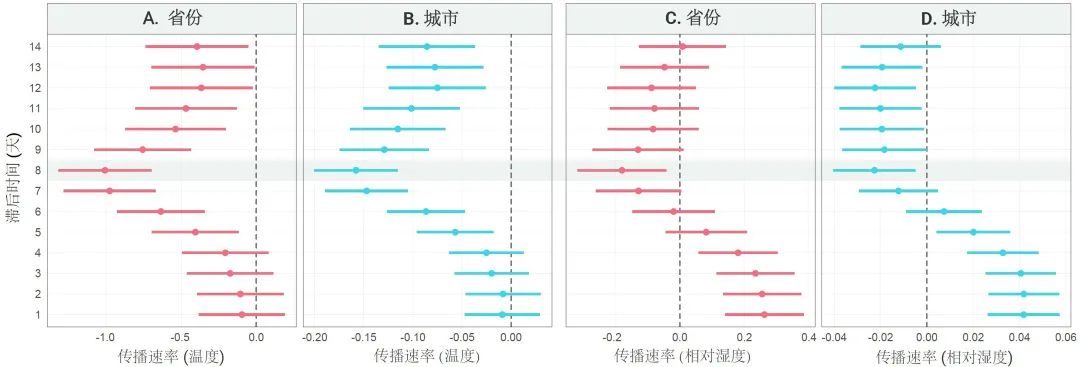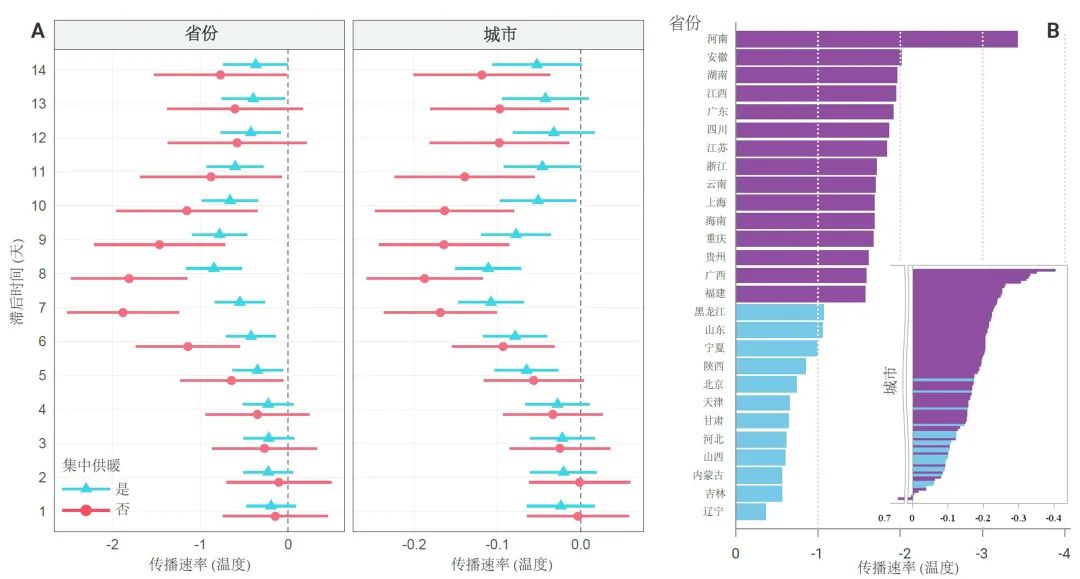
Featured research
The Innovation | Contribution of Temperature Increase to Restrain the Transmission of COVID-19 in China
The Innovation | Contribution of Temperature Increase to Restrain the Transmission of COVID-19 in China
Dr. Wang Bin from the School of Public Health at Peking University organized collaborative research with multiple domestic and international research institutes. They concluded that under meteorological conditions in mainland China, an increase in environmental temperature can significantly inhibit the spread of COVID-19, but it is not a decisive factor. With the arrival of the low-temperature environment in winter, policymakers and the public should place more emphasis on the implementation of proactive prevention measures such as increasing social distancing and wearing masks.

Figure 1. Graphical Abstract
Paper type: Article
First affiliated institution: Peking University
First author: Mengyuan Ren, Rongjuan Pei, Junxi Chen, Bahabaike Jiangtulu
Corresponding authors: Bin Wang (Peking University), Wuxiang Guan (Wuhan Institute of Virology, Center for Biosafety Mega-Science, Chinese Academy of Sciences)
Journal: The Innovation, IF2022 = 33.1, CAS 1st Quartile
Article information: Ren M#, Pei R#, Jiangtulu B#, Chen J#, Xue T, Shen S, Yuan X, Li K, Lan C, Chen Z, Chen X, Wang Y, Jia X, Li Z, Rashid A, Prapamontol T, Zhao X, Dong Z, Zhang Y, Zhang L, Ye R, Li Z, Guan W*, Wang B*. Contribution of Temperature Increase to Restrain the Transmission of COVID-19 in China. The Innovation, 2021, 2:100071. https://doi.org/10.1016/j.xinn.2020.100071
Main page: https://www.sciencedirect.com/science/article/pii/S2666675820300746

Dr. Wang Bin from the School of Public Health at Peking University organized collaborative research with multiple domestic and international research institutes to examine the relationship between environmental temperature, humidity, and the infectivity of COVID-19. By setting strict inclusion and exclusion criteria, the study selected regions in China that met the conditions during the period from January 23 to February 21, 2020, excluding the more complex epidemic situation in Hubei Province. The team constructed a linear mixed effects model to explore the relationship between environmental temperature, relative humidity, and the transmission rate of COVID-19 at the population level. This study fully considered the effects of confounding factors, such as the intensity of epidemic control measures, wind speed, precipitation, population density, and human migration.
The research found a significant association between increased environmental temperature and reduced transmission rates of COVID-19. Moreover, this relationship exhibited a certain lag effect; particularly, when the lag time was 8 days, the association was strongest (Figure 2-A & B). This is very close to the time interval estimated by related studies from virus infection to the official announcement of confirmed cases [1,2]. Compared to temperature conditions, the association between relative humidity and COVID-19 transmission was generally weaker (Figure 2-C & D).

Figure 2. Ambient Temperature & Relative Humidity and COVID-19 Transmission. The model was applied using two different geographical units: "cities" and "provinces."
Nevertheless, there is still some bias in the temperature exposure assessment method used in the study model, as outdoor environmental temperatures are difficult to represent the actual living conditions of the population. For example, indoor temperatures in Northern China are relatively high and stable due to heating. Previous surveys have shown that the total daily indoor activity time for the Chinese population is as high as approximately 83% [3]. The study divided different geographical units into two groups according to China's municipal heating situation to explore the interaction between this factor and environmental temperature on the transmission of COVID-19. The study found that the association between environmental temperature and COVID-19 transmission rates was relatively stronger in areas without centralized heating compared to areas with centralized heating (Figure 3).

Figure 3. Modification effect of the central heating status on the association of ambient temperature with the transmission rate of COVID-19 (A) and geographic variances of the effects of temperature on the transmission rate when LT = 8 days (B)
Due to the high collinearity between environmental temperature and humidity, it is theoretically challenging to distinguish their independent effects on the transmission of COVID-19. In response to this, researchers from the Wuhan Institute of Virology, Chinese Academy of Sciences, conducted experiments in a P3 laboratory simulating different environmental temperature and humidity conditions to study their effects on the survival capability of the COVID-19 virus (Figure 4). The results indicated that the higher the environmental temperature (rising from 4°C to 37°C), the poorer the virus's survival capability. In contrast, the effect of relative humidity (increasing from ~50% to >99%) on the virus's survival capability was relatively weaker.

Figure 4. The effect of environmental temperature and relative humidity on the infectivity of COVID-19 in cells (in vitro cell experiments)
Summary and Outlook:
Under the meteorological conditions in mainland China, an increase in environmental temperature can significantly inhibit the spread of COVID-19, but it is not a decisive factor. As the low-temperature environment of winter approaches, policymakers and the public should focus more on implementing proactive preventive measures such as increasing social distancing and wearing masks to curb the spread of COVID-19 among the population. Considering the seasonal alternation between the Northern and Southern Hemispheres, it is urgently necessary for countries around the world to actively promote joint prevention and control policies to more effectively control the pandemic.
Author Biography:
Mengyuan Ren, Rongjuan Pei, Junxi Chen, and Bahabaike Jiangtulu are the co-first authors of this paper, while Bin Wang and Wuxiang Guan are the co-corresponding authors.
Bin Wang, Associate Researcher at the Institute of Reproductive Health, School of Public Health, Peking University. His primary research focus is on environmental health. His related research findings have been published in core academic journals such as Environmental International, Environmental Science & Technology, The Innovation, and the Chinese Journal of Reproductive Health. During the COVID-19 pandemic, as a key consulting expert, he assisted the State Council’s Joint Prevention and Control Mechanism against COVID-19's "Virus Transmission Task Force" in completing numerous policy recommendations and research reports, providing essential scientific support for COVID-19 pandemic prevention and control.
Wuxiang Guan, Researcher at the Wuhan Institute of Virology, Chinese Academy of Sciences. In 2012, he was selected for the "Hundred Talents Program" of the Wuhan Institute of Virology, Chinese Academy of Sciences. His current research primarily focuses on the pathobiology and pathogenic mechanisms of parvoviruses, the epigenetics of emerging severe infectious disease viruses, and the post-transcriptional processing mechanisms of non-coding RNAs, aiming to elucidate the regulation of viruses at the transcriptional and post-transcriptional levels from a molecular perspective. He has published more than 10 high-level papers in top international journals such as Blood, Journal of Virology, and Journal of Biological Chemistry.
Special acknowledgments to Ping Zhong, Wentao Wang, Xian Zhang, and other personnel from the China 21st Century Agenda Management Center for their assistance during the paper's design stage, as well as to other collaborators for their full cooperation and support.
Contributed by | Professor Bin Wang's Team (Peking University)
Reviewed by | Bin Wang

